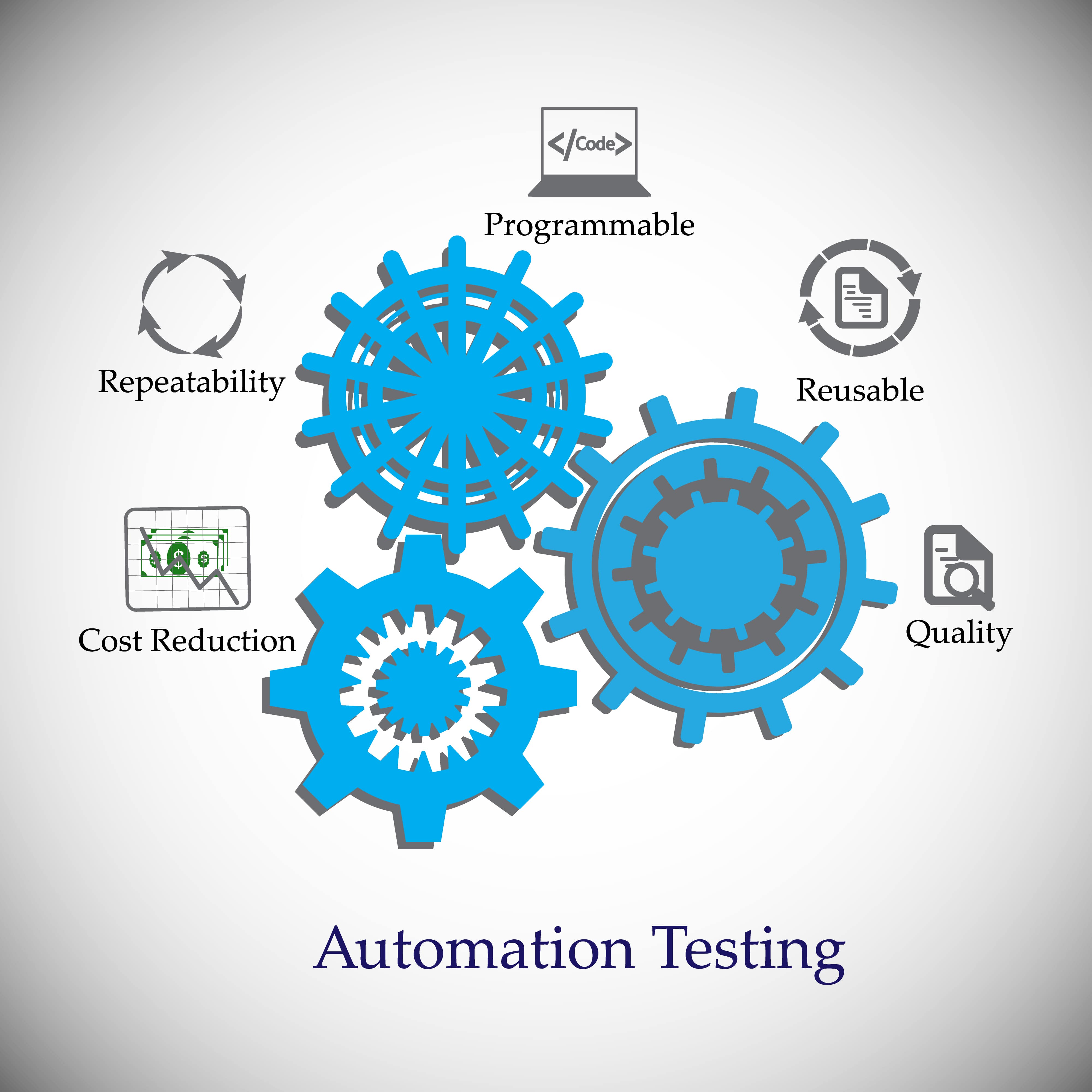Exploring the Future of Automation Testing in Software Development
Exploring the Future of Automation Testing in Software Development
Blog Article
From Handbook to Automated Screening: A Comprehensive Guide to Transitioning Efficiently and Properly
In the world of software program screening, the change from manual to automated procedures has ended up being a significantly essential change for companies looking for to boost performance and precision in their screening practices. As technology remains to advancement, the demand for smooth and efficient automated screening approaches has actually never been much more pressing. The trip from guidebook to automated testing is not without its challenges, but when come close to tactically and with a clear plan in mind, the benefits can be significant - automation testing. In this thorough overview, we will explore vital actions and considerations vital for an effective shift, from the initial option of devices to the combination of automation into existing workflows. Remain tuned to uncover the understandings that will certainly help lead the way for a smoother and much more effective screening process.
Advantages of Automated Checking
Automated screening offers countless benefits, improving effectiveness and accuracy in software program advancement procedures. One key benefit is the significant reduction in testing time. Automated tests can be run at the same time on several devices and operating systems, considerably speeding up the screening phase compared to hand-operated screening. This enhanced efficiency enables faster comments on the high quality of the software program, enabling designers to identify and resolve problems promptly.
In addition, automated screening makes certain a greater level of precision in finding issues. Because automated tests follow predefined scripts, human error is lessened, bring about more reputable examination outcomes. Consistency in testing is also improved, as automated tests execute the very same actions specifically each time they are run. This uniformity is crucial in ensuring that all functionalities of the software application are extensively examined, reducing the chance of unseen pests slipping through to production.
Choosing the Right Devices

First of all, evaluate your needs and goals. Comprehend the extent of your project, the technologies included, and the capability of your team. This evaluation will certainly help you determine the functions and abilities you require in your screening tools.
Secondly, consider the compatibility of the devices with your existing procedures and systems. Seamless integration with your existing software program advancement lifecycle is necessary to make certain a smooth shift to automation.
Furthermore, examine the scalability and flexibility of the devices. As your screening needs evolve, the devices must be able to adjust and fit changes properly.
Finally, consider the support and area around the tools. When applying automated testing, durable assistance and an energetic customer area can offer important resources and help. By thoroughly taking into consideration these aspects, you can choose the right devices that line up with your demands and established the phase for a successful change to automated screening.
Creating Efficient Test Scripts

When crafting test manuscripts, it is important to think about the specific demands of the software being examined and make sure that the scripts address all essential performances. Detailed and clear naming conventions for examination scripts and test instances can improve readability and maintainability. Additionally, integrating error handling systems within the test manuscripts can help in recognizing and dealing with problems without delay.
Additionally, arranging test manuscripts right into modular elements can boost reusability and scalability, decreasing redundancy and boosting efficiency in test manuscript maintenance. Routine testimonials and updates to evaluate manuscripts are essential to maintain pace with progressing software demands and capabilities. By following these principles, testers can develop reliable and robust test scripts that add considerably to the success of automated screening processes.
Integrating Automation Into Workflows
By perfectly integrating automated screening tools like Selenium or Appium into the software application development lifecycle, teams can attain faster responses on code changes, leading to quicker pest detection and resolution. This assimilation enables for continuous testing throughout the growth process, guaranteeing that any concerns are determined early on, resulting in higher software program high quality. Proper assimilation of automation tools calls for collaboration between growth, screening, and operations groups to develop a unified workflow that enhances performance and efficiency in supplying premium software program products.
Making Certain a Smooth Transition
Effectively transitioning to automated screening involves careful preparation and careful implementation to make the most of and decrease disturbances performance in the software program advancement procedure - automation testing. To guarantee a smooth transition, it is vital to begin by performing a comprehensive evaluation of the present screening procedures and recognizing locations where automation can bring one of the most substantial advantages. Involving with all stakeholders early on while doing so, including designers, testers, and task supervisors, is crucial for garnering support and buy-in for the automation effort
Interaction is vital throughout this change stage. Clear interaction of the objectives, benefits, and expectations of automated testing aids to take care of any resistance or concerns that may develop. In addition, giving adequate training and sources for employee to upskill in automation devices and techniques is important for making sure an effective change.

Final Thought
To conclude, transitioning from manual to automated testing uses numerous benefits, including increased performance and dependability. By choosing the suitable tools, creating reliable examination scripts, and incorporating automation flawlessly right into process, organizations can make sure a smooth and effective shift. It is vital to accept automation as a valuable asset in software program screening processes to boost overall quality and performance.
In the realm of software program screening, the change from handbook to automated processes has actually ended up like it being a progressively essential transition for organizations looking for to improve effectiveness and precision in their screening methods. Automated examinations can be run at the same time on numerous gadgets and running systems, substantially speeding up the screening phase compared to hands-on testing. Consistency in screening is additionally enhanced, as automated tests perform the same steps exactly each time they are run.To guarantee the effective execution of chosen testing tools, the production of efficient test manuscripts plays an essential duty in verifying the functionality and efficiency of automated processes - automation testing. By adhering to these concepts, testers can produce reliable and durable test manuscripts that add substantially to the success of automated testing procedures
Report this page